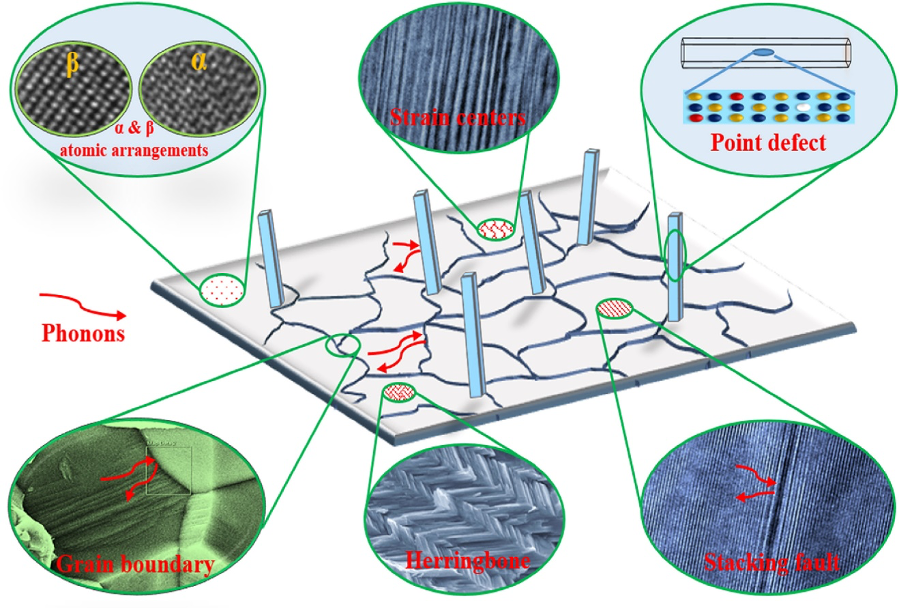Achieving synergistic performance through highly compactedmicrocrystalline rods induced in Mo doped GeTe based compounds
Dr. Raman Sankar collaborate with Prof. Yang-Yuan Chen and Prof. Kuei-Hsien Chen to investigate the lead-free thermoelectric material. Germanium telluride (GeTe) has been extensively investigated due to its high thermoelectric performance (ZT) in mid-temperature; however, high p-type carrier density (~1021 cm-3) hinder its suitability for higher ZT. To enhance the thermoelectric performance of the environmentally favorable GeTe, explored the Mo doping significantly optimizes the carrier concentration along with uniquely unveiled microcrystalline rods accompanying compact grain boundaries, high-density planar defects, and point defects effectuating all-frequency phonon scattering yields to lower down the thermal conductivity. Furthermore, Sb/Bi co-doping with Mo at the Ge sites predominantly reduces the carrier concentration and thermal conductivity to attain a higher ZT. The co-doping of Bi manifested a more prominent role in achieving the highest ZT of ~2.3 at 673 K for the sample composition with Ge0.89Mo0.01Bi0.1Te. This study demonstrates an exciting hidden aspect of micro-structural modification by forming highly dense microcrystalline rods through Mo doping to achieve high performance in the GeTe system. This scientific investigation was published in Materials Today Physics journal published by the Elsevier publishers.
DOI: https://doi.org/10.1016/j.mtphys.2021.100571
Fig. 1. Schematic diagram of different phonon scattering centers observed in Mo doped GeTe thermoelectric systems.
